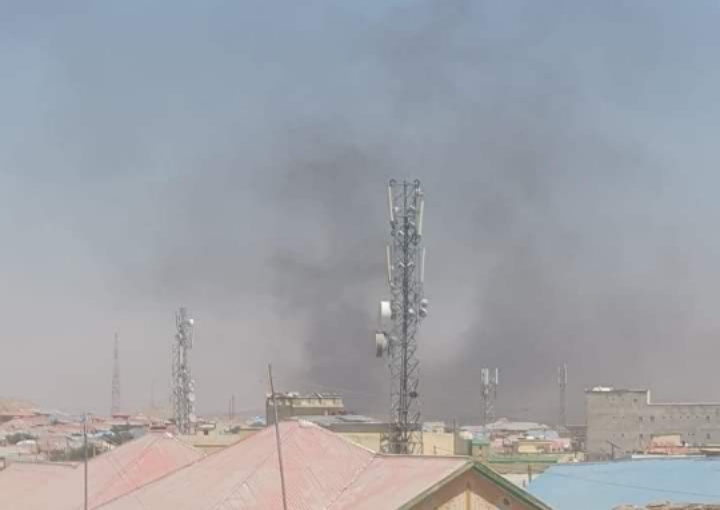Despite setbacks, al Shabaab remains a resilient and destabilizing threat in Somalia. In the past year, it was linked to 2,553 violent events and 6,225 fatalities. This represents nearly a doubling in the number of incidents since 2019. Fatalities involving al Shabaab have increased by 120 percent during this period…
A key means by which al Shabaab has remained resilient is the estimated $100 million in revenue it generates annually. By comparison, the Federal Government of Somalia accrues approximately $250 million in annual revenue.
Al Shabaab’s revenues support roughly 5,000 to 10,000 well-armed fighters as well as a network of operatives on the group’s payroll. Its revenues enable al Shabaab to sustain stable illicit regional supply channels while maintaining a phantom presence throughout much of Somalia.
Al Shabaab extorts revenue from various aspects of everyday Somali life—from toll roads to property taxes—building on its cultivated reputation of omnipresence and intimidation. Al Shabaab has also compromised various government agenciesincluding, for example, acquiring freight manifests from port employees enabling it to extort shipping companies upon arrival.
Al Shabaab has regularly conducted assassinations to enforce its will and silence opposition, targeting state governors, election delegates, government officials, and clan elders. Sheikhs who have publicly declared al Shabaab’s campaign un-Islamic have been singled out.
Al Shabaab’s revenues enable it to maintain a robust presence in media and information spaces to push its ideology, shape national and state politics, and spread disinformation. With such largesse, al Shabaab is well positioned to remain a destabilizing force in Somalia, the region, and further afield for years to come. Dismantling al Shabaab’s revenue generating infrastructure, therefore, is vital to undermining the capacity of the militant group.
How Does Al Shabaab Generate Revenue?
Al Shabaab has built a sophisticated criminal enterprise, compromising multiple levels of governance and coercing a wide variety of businesses and communities into compliance.
Al Shabaab has been honing a highly centralized system of extortion at ports of entry and roadways for nearly two decades, mostly in the territory it holds in the southern and south-central regions of the country. Its operatives maintain a registry of citizens’ assets for the purpose of collecting an annual 2.5 percent “zakat” tax. The zakat collection system is enforced by al Shabaab’s intelligence arm, the Amniyat, through systematic intimidation and violence. Traders who refuse to pay at checkpoints or community leaders who fail to comply with zakat demands are subject to assassination.
Al Shabaab generates revenue from 10 of Somalia’s 18 regions even though it may not retain a physical presence in all of them. The combination of intelligence and threat of violence allows al Shabaab to tap shipping imports and real estate transactions despite having no physical control over commercial hubs like Mogadishu and Bossaso.
Al Shabaab also invests a portion of its significant budgetary surplus in land and small- and medium-sized businesses in areas outside its control. In some regions, the group bombs or attacks the main travel routes forcing civilians to use the smaller roads on which al Shabaab maintains checkpoints.
What Makes Al Shabaab’s Revenue Generation So Successful?
Infiltration
Through cronyism and corruption, al Shabaab’s Amniyat has been able to consistently infiltrate the government, gaining the group sources of intelligence necessary to extort local authorities, businesses, and communities. Al Shabaab has been accused of having pressured clan elders to nominate sympathetic candidates to run for office, thereby giving it inside access to the National Assembly, Senate, and state legislatures.
The Amniyat has repeatedly infiltrated the National Intelligence and Security Agency(NISA). The Forum for National Parties, a conglomerate of six opposition parties went so far as to demand an overhaul of NISA in 2020. Some elements of Somalia’s national security forces have also been co-opted by al Shabaab, with as much as 30 percent of the Somali Police Force in Mogadishu believed to be compromised.
Al Shabaab has similarly gained influence within government agencies responsible for taxation and the Somali Chamber of Commerce and Industry.
Threat of Violence
Years of arms smuggling into the country, including via Puntland and Yemen, as well as accumulated materiel gained from attacks on military installations garnered al Shabaab a stockpile of increasingly sophisticated weaponry and components for IEDs. This steady supply of weapons ensures al Shabaab has a monopolization of violence in the areas under its control. In areas outside of its control, al Shabaab has undermined the perception of government capability by conducting numerous attacks on soft targets. During one such operation, operatives wore uniforms and identity cards from NISA. In another, the suicide bomber was an employee of the regional administration
Corruptible Institutions
Al Shabaab’s resilience is due, in part, to a government fraught with patronage and clannism, which exposes it to infiltration and sabotage.
In its own self-assessment, the Somali government noted “Corrupt government officials tolerate illegal activities in return for payments. Business is based on patronage networks, and tight monopolies dominate the market…. The governing elite are continuously involved in allegations of embezzlement of public funds from the already meagre Somali coffers, providing opportunities for rampant [money laundering].”
The prevalence of patronage in government and clan politics has contributed to the finding that despite years of international investment and training, “a significant portion of [Somali National Army] personnel deployed in the field have never received training and/or equipment from external partner programs or as part of the [federal member states] formation process.”




